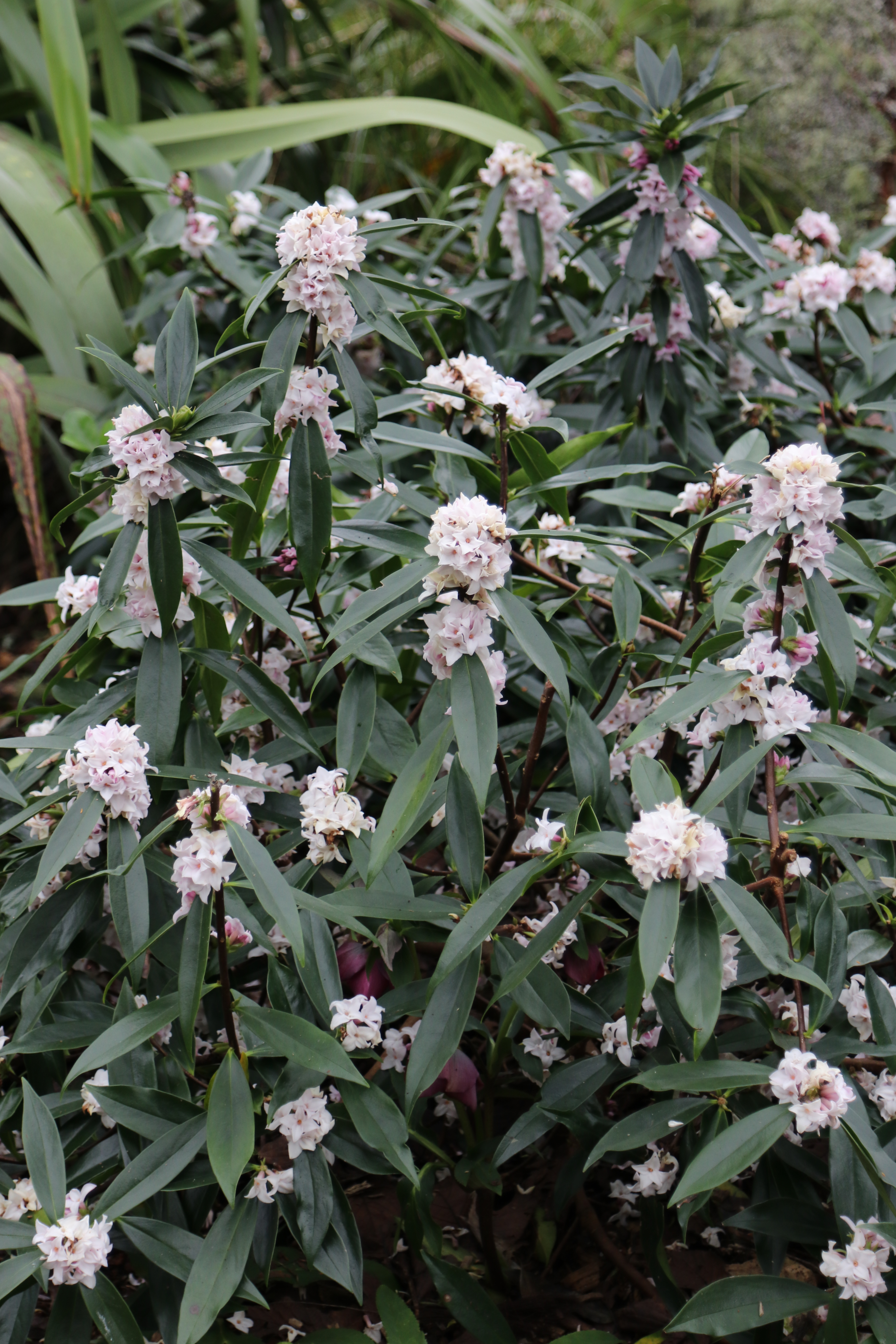Always choose healthy, well-grown plants. Planting after autumn rains when the soil is moist and warm allows shrubs to become established before winter. This enables them to withstand dry periods during the following summer. Before planting ensure that the root-ball is saturated and remove planter bag pot or wrapping with the minimum of root disturbance. Trim any broken roots or branches and plant at the same level as in the container.
Plant in cool lime-free soil enriched with plenty of organic matter. Part shade is best for most daphne varieties. All-day direct sun can turn leaves yellow. On the other hand, too much shade will limit their flowering. Dig a hole twice the diameter of the root ball partly backfill with a mix of compost, sheep pellets and your topsoil. Carefully remove the pot and gently plant the daphne firm and water in well once planted. If you do wish to try planting a daphne in heavier soils plant into a slight mound to improve drainage use and add Gypsum to help improve soil structure without changing the pH and add plenty of organic matter. Do your best to plant daphne where it is to remain because they do not like to be disturbed. Limit your choice of sites to those with exceptional drainage and at least three hours of afternoon shade. Crown and root rots threaten daphne in poorly drained locations.




.jpg?width=1200&height=1200&v=1d4024dceb89e50)

.jpg?width=1200&height=1200&v=1d5569224d63650)
 .jpg?width=1200&height=1200&v=1d4024df6ce2770)
.jpg?width=1200&height=1200&v=1d55676a892f2b0)
 .jpg?width=1200&height=1200&v=1d4024e3b65f7f0)